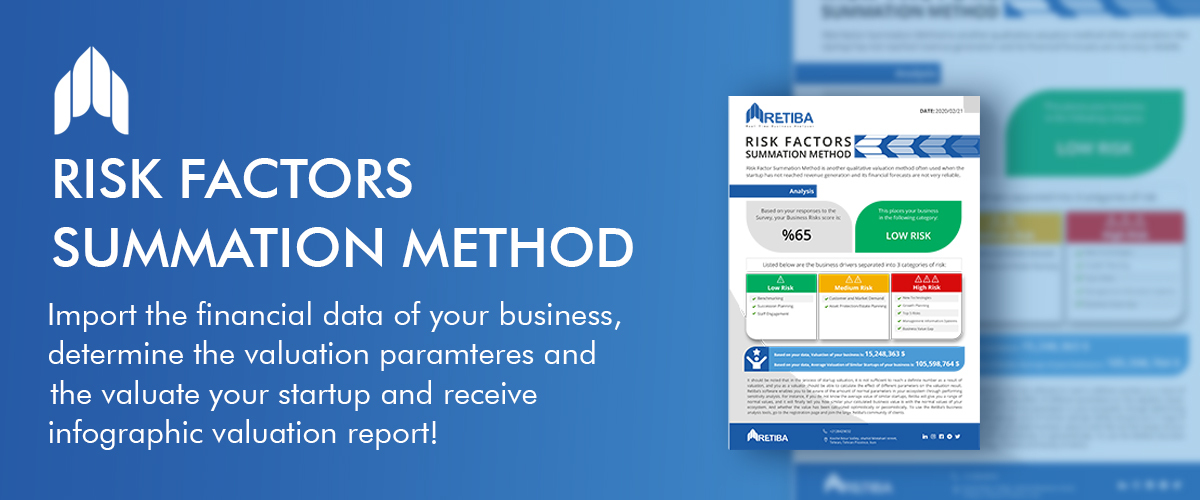Startups are companies that face many risks in the process of their work. These risks may be from inside or outside the startup. Dealing with these risks and dangers is one of the most important activities that startup owners need to do. In other words, it is the risk analysis that will save startups from the dangers ahead.
In this text, we will take a look at the definition of risk analysis, its importance and the benefits of using it. If you are one of the business owners who are going to face various dangers in the world of startups, don’t miss this article by Retiba website.
Table of Contents
What is risk analysis?
Risk is a critical danger that must be controlled and managed by the members of a business. Risk analysis refers to the set of activities that startup owners need to do to know what to do to face future risks. Although it is not possible to predict all future events, focusing on some of these risks, in addition to saving time and money, also guarantees the life of the startup.
Types of risks
Because startups deal with different people and areas, risks are divided into different categories.
Team risk
To analyze team risk, look at your team’s situation, and answer a few key questions. For example, do your team members have enough experience to implement the desired product? Do team members work well together? Are what they want in line with your wishes?
Market risk
At this point, you need to analyze the market and answer the following questions. Is there a market for your product or service? Does your service meet the needs of the market? What companies are your competitors and what are their strengths/weaknesses?
Financial risk
At this stage, you should ask yourself about the amount of your budget and the necessary plans to spend it and determine your situation.
Technical risk
In this type of analysis, you should examine your technologies and ask yourself how much and how difficult it is to implement the relevant technology. Answering each of these questions will shed light on your current and future situation.
How to perform a risk analysis?
Once the types of risk have been identified, you can begin the risk analysis process. The process involves several steps, each of which is a key step in a dream with risk.
Create a list of available risks
You must first create a list of all the risks that threaten you. The list includes team, market, financial and technical issues.
Determine the effects of each risk
Determining the negative effects of each risk is clearly the next step in risk analysis. At this stage, the worst circumstances must be considered and optimism should be put aside. Business owners who are very optimistic at this stage cannot determine the effects of a risk in a way that is realistic.
Risk control
At this point, you need to come up with ideas for controlling your risk. These ideas may be presented by anyone, but they must be applicable. You should set aside suggestions that make you face other risks.
Once you’ve come up with ideas for risk management, you need to implement them. It may cost you a lot to run, but it guarantees the life of your startup. Sometimes this step may inadvertently put you at new risk. If this risk is critical, include it in the list, and if it is a risk that does not interfere with your workflow, include it in the next step of risk analysis.
Recording risk
Recording information about the process of identifying risk, its effects and controlling it is undoubtedly one of the necessities that can be useful for your startup in the future. Many startups will encounter a similar problem several times. In these cases, having the documents will show you the way to deal with this risk and will prevent you from wasting time and money. Sometimes reviewing past problems may give you a new way to control a different risk.
Advantages of risk analysis
This analysis has many advantages for different people. In the following, we will review these benefits.
Knowing about your weaknesses
In addition to threatening startup activity and success, risks often include instructive points. Many of the weaknesses of a startup are so small that business owners don’t realize it. Sometimes they may even consider this small weakness an advantage. When a risk analysis is performed, many of the previous perceptions of startup owners will change and they will notice small side effects that may turn into a major crisis in the future.
Sharing risks with stakeholders
Providing documentation of this analysis to senior startup officials, such as investors, can confirm the quality of your performance and deepen trust and cooperation between the parties. Undoubtedly, a startup that does nothing to dream about risks will certainly fail.
Risk mitigation
Risk analysis will not only reduce the damages of a risk, but also reduce the possibilities of further risks occurring. If a similar risk occurs in the future, you can pay less to control it. The reason for this is that with a new risk, business owners just need to change their previous program a bit so that they can easily control the risk.
The final word
In this article in Retiba website, we took a look at the definition of risk analysis, its trends and the benefits of this type of analysis, and saw how useful this type of analysis can be in the success of a startup. Of course, risk analysis cannot be done without precision, perseverance, patience and vigilance, but once you add these to your work, your startup will never face big failures.









